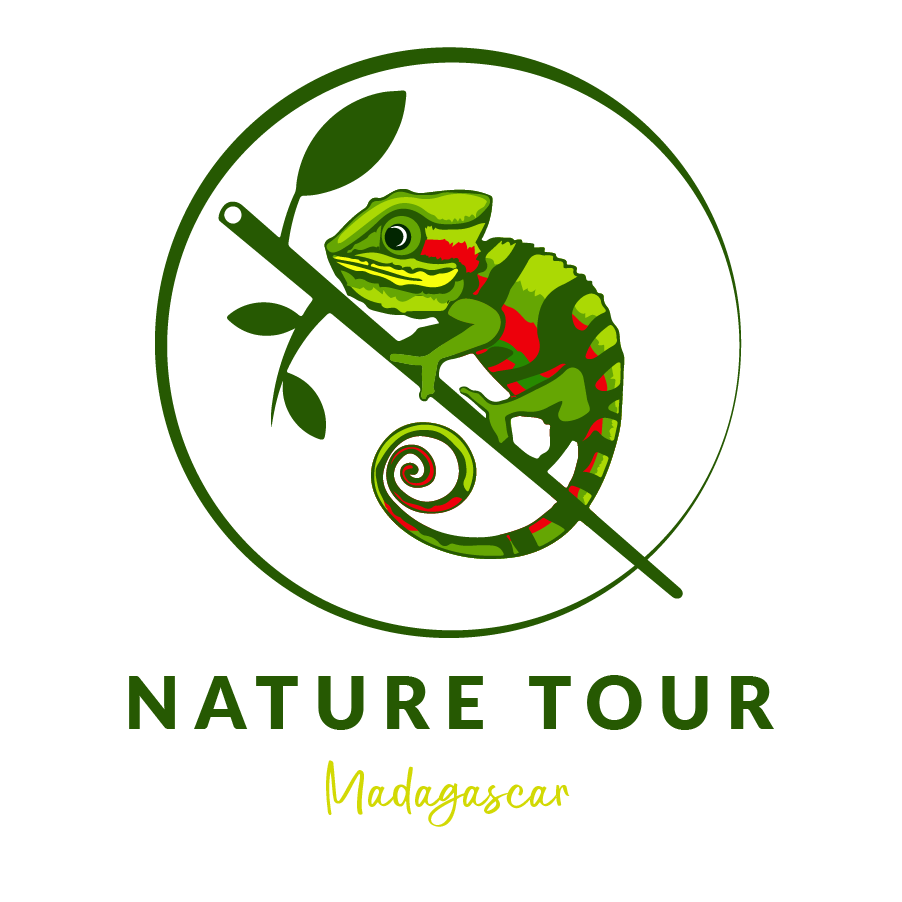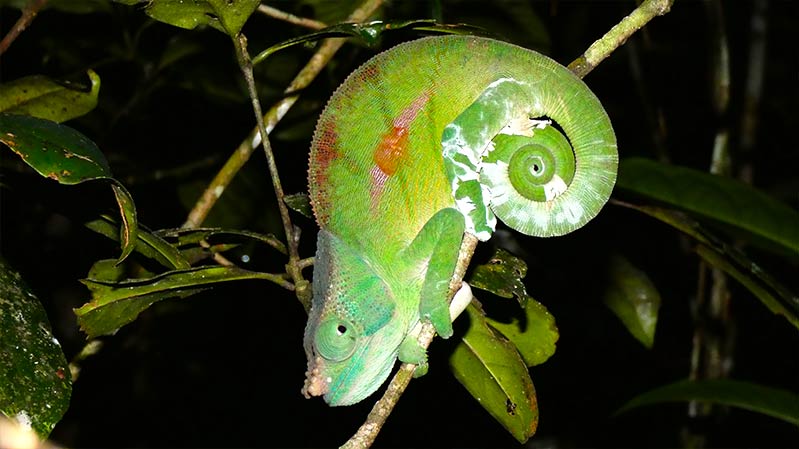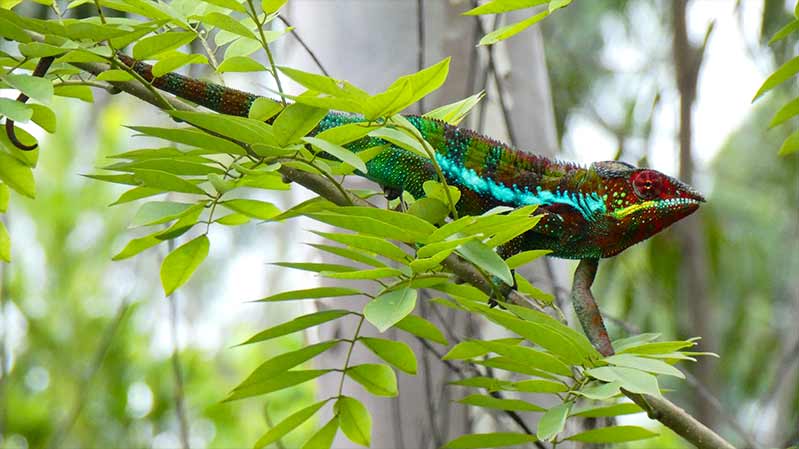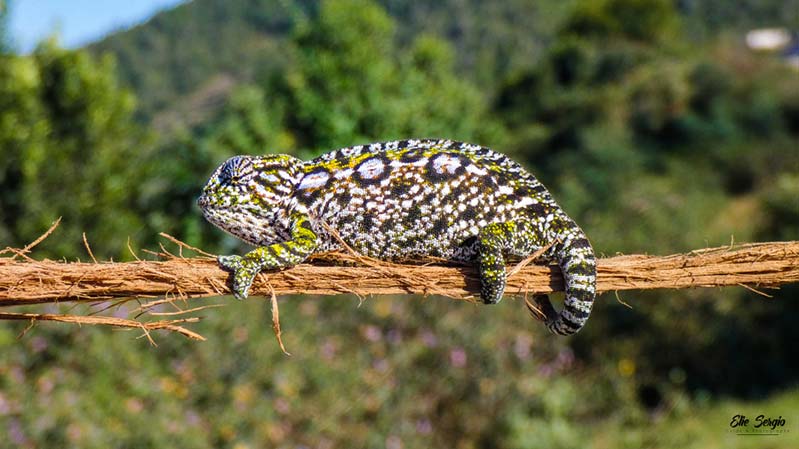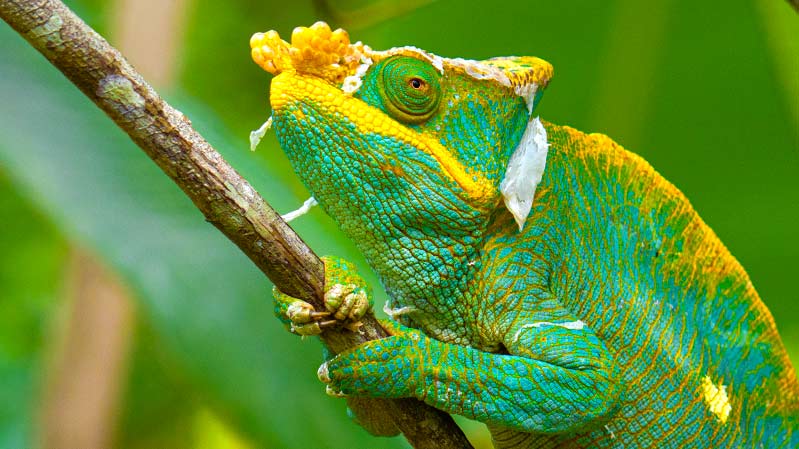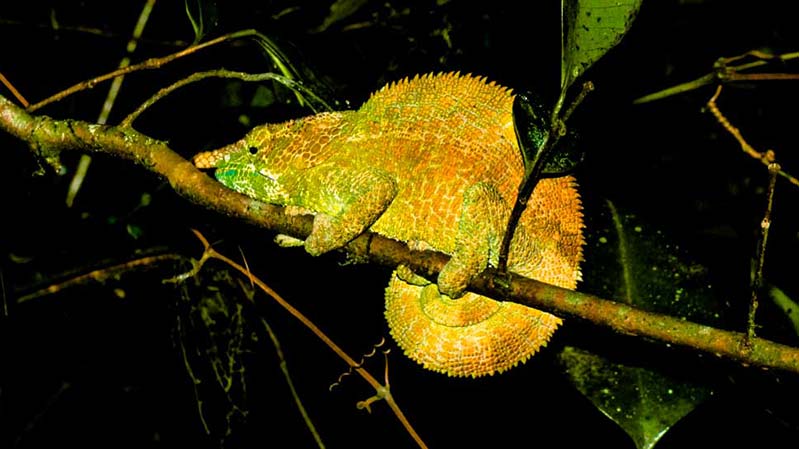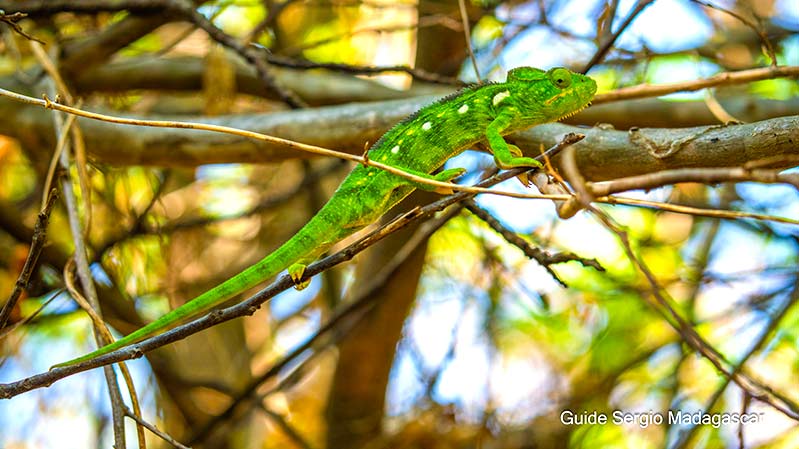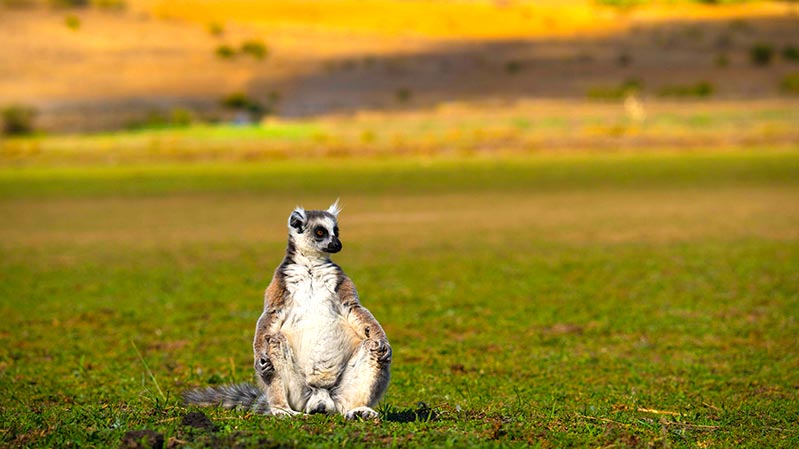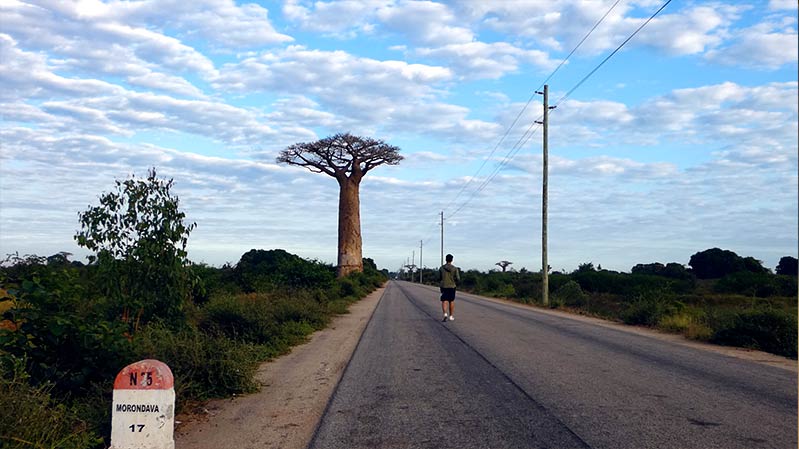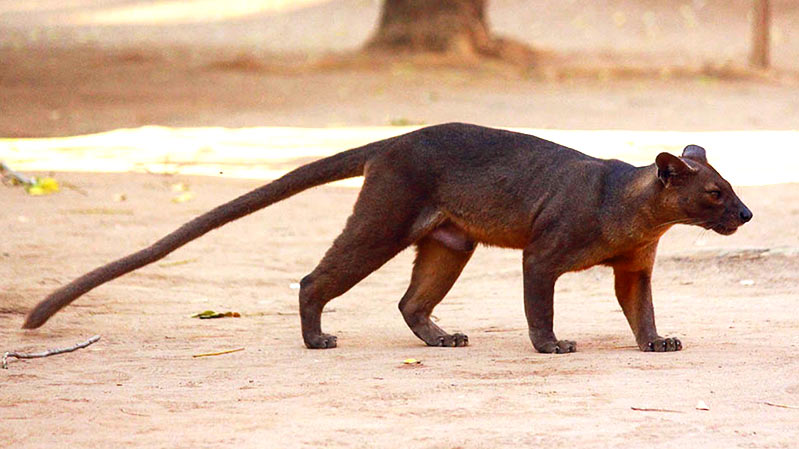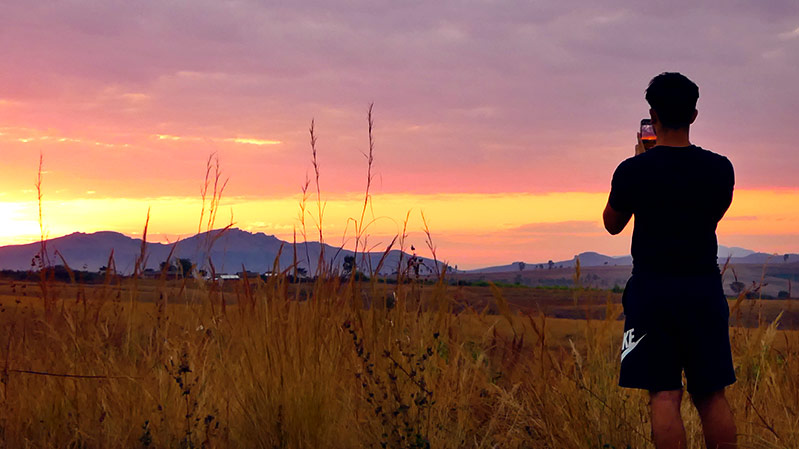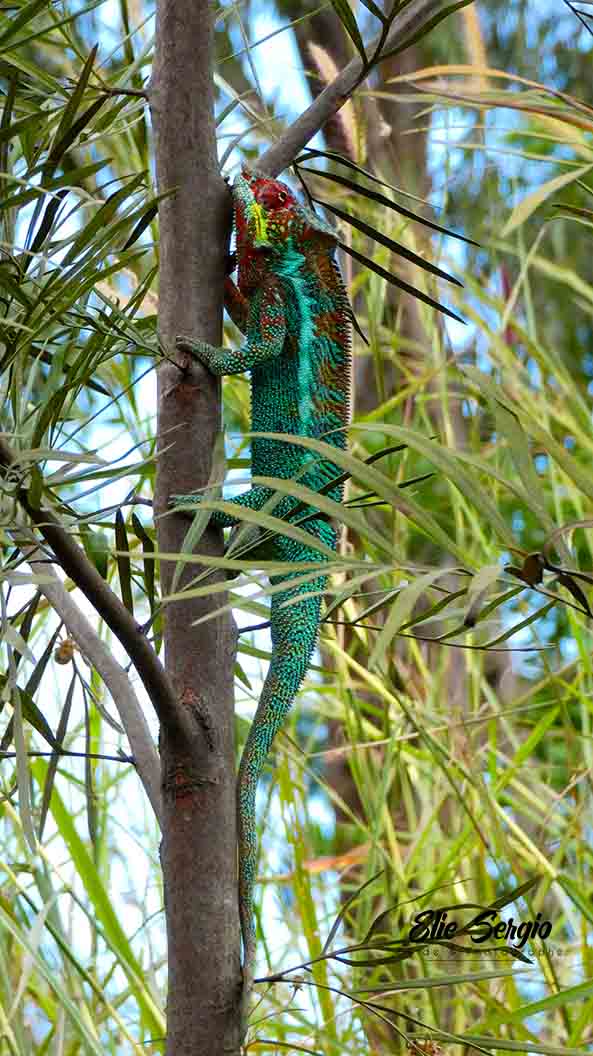Chameleon Tour
Rainforests and rare species
Madagascar Chameleon Tour | A 16-Day Journey into the Wild.
16 Days and 15 nights adventure
Andasibe – Vohimana – Ranomafana – Anja Reserve – Kirindy forest.
5548€ for 2 peoples | One room
Not included: flight, VISA
An extraordinary Madagascar adventure to experience wildlife wonders in Mitsinjo Reserve at Andasibe, Vohimana Reserve, and Ranomafana National Park. Discover Indri lemurs in Andasibe’s lush forests, and explore Ranomafana’s rainforests, home to bamboo lemurs, vibrant geckos, and Parson’s chameleons. Anja Reserve offers close encounters with ring-tailed lemurs, while Kirindy Forest provides a thrilling chance to spot the elusive fossa, Madagascar’s top predator, in its natural habitat.
This immersive experience offers close encounters with Madagascar’s unique flora and fauna, including iconic chameleons, in untouched forests and reserves—an unforgettable adventure for nature lovers and wildlife enthusiasts.
Day 1: Arrival in Antananarivo (Tana)
The journey began in Antananarivo, Madagascar’s bustling capital. After settling in, participants received a briefing about the tour, providing an overview of the incredible chameleon species and other wildlife they would encounter. This introduction set the stage for an exciting adventure through Madagascar’s wilderness.
Day 2: Tana to Andasibe (4 hours)
Spotting the Calumma parsonii cristifer and others species.
Located near Andasibe, the Mitsinjo Reserve is a biodiversity hotspot. One of the highlights was spotting the Calumma Parsonii Cristifer, a large chameleon known for its unique ridges and vibrant coloration—a must-see for any chameleon enthusiast. As participants walked through the reserve’s dense foliage, they kept an eye out for other endemic species, such as lemurs and rare birds.
Day 3: Andasibe to Vohimana back to Andasibe.
Finding the Calumma parsoni yellow giant.
The next stop was the Vohimana Reserve, where lush vegetation and the sounds of the rainforest surrounded the group. The star of Vohimana was undoubtedly the Calumma Parsonii Yellow Giant, one of the largest chameleons in the world. It was an awe-inspiring sight to see this giant among the trees, blending in with the foliage.
Encountering Furcifer bifidus, Calumma fallax and others chameleon species.
Participants also encountered the Furcifer bifidus, with its bifurcated horns, and the colorful Furcifer pardalis. Vohimana proved to be a paradise for chameleon lovers, showcasing an impressive variety of chameleon species thriving in this reserve.
Day 4: Andasibe to Ambodiriana back to Andasibe.
Spotting different colors of pardalis male and female.
Ambodirina is renowned for its Furcifer pardalis, known as the panther chameleon. Here, the striking differences between males and females were noticeable – males often displayed bright and vibrant colors, while females exhibited softer, pastel hues. This fascinating stop showcased the incredible diversity within a single species. Two different colors of panthers.
Day 5: Andasibe to Antsirabe.
A Scenic Journey Through Madagascar’s Heartland.
The drive from Andasibe to Antsirabe offered a full day of travel through Madagascar’s picturesque countryside. Along the way, participants enjoyed views of lush green rice paddies set against rolling hills and traditional Malagasy houses built from red clay and thatch. The landscape was dotted with farming villages, where locals could be seen tending to their fields, providing a glimpse into rural life in Madagascar.
Day 6: Antsirabe to Ambositra
Ambositra offered a unique landscape characterized by rolling hills and beautiful terraced rice paddies. It was here that participants discovered the Furcifer Lateralis, a small yet stunning chameleon species known for its colorful patterns and adaptability, adding another layer to the Madagascar experience.
Day 7: Ambositra to Ranomafana.
Exploring rare chameleon habitats.
The journey continued southward with a six-hour drive to Ranomafana, famous for its rich biodiversity. After a hearty lunch, participants visited a unique arboretum, a prime location for spotting the Parson’s chameleon (Calumma parsoni) with its distinctive yellow lips. This area also offered sightings of the Furcifer balteatus, known for its beautiful coloration and patterns. The arboretum provided an ideal setting to observe these rare species up close in their natural environment, making it an unforgettable experience for chameleon enthusiasts.
Day 8: Ranomafana National Park – A paradise for wildlife lovers.
Encountering Calumma crypticum, Calumma fallax, and Calumma gastrotaenia.
Ranomafana teemed with chameleons, from the elusive Calumma crypticum to the slender Calumma fallax and the delicate Calumma gastrotaenia. Each species showcased the rich diversity of Madagascar’s chameleon population.
At night is easy way to spot more species of chameleons at Ranomafana.
Meeting Madagascar’s Smallest lemur – The Mouse lemur
Apart from chameleons, participants encountered the adorable Mouse lemur, the smallest primate in the world. Its big eyes and tiny stature made it a highlight of the tour.
Day 9: Ranomafana to Fianarantsoa
Immersing in Ranomafana’s Wildlife.
Another day to explore Ranomafana’s biodiversity-rich ecosystem allowed participants to spot even more species of chameleons and other wildlife in the morning. Hiking through the lush forest paths, they discovered other unique species, like the striking red-legged frogs and various types of orchids and nocturnal geckos that thrive in the park’s damp, tropical climate.
Day 10: Fianarantsoa to Ambalavao bakc to Fianarantsoa
Encountering the Ring-Tailed Lemur at Anja Reserve.
The journey led to the Anja Community Reserve near Ambalavao, known for its spectacular population of ring-tailed lemurs. Against the backdrop of towering granite cliffs, these iconic lemurs moved gracefully among the trees, providing fantastic photo opportunities. The reserve offered an intimate look at lemur social behaviors within their natural habitat, a true “paradise on earth” for wildlife enthusiasts.
Day 11: Fianarantsoa back to Antsirabe
Scenic drive through the highlands.
Participants journeyed through Madagascar’s scenic highlands, passing terraced rice fields and charming traditional villages. Antsirabe welcomed the group with its cooler climate and distinct architecture, showcasing French colonial buildings mixed with Malagasy influences.
Day 12: Antsirabe to Morondava
Gateway to the baobab region.
The drive from Antsirabe to Morondava revealed the landscape transition from highland greenery to dry, dusty plains. Known for its iconic baobab trees, Morondava marked the beginning of an adventure into Madagascar’s western dry forests.
Day 13: Morondava to Kirindy forest back to Morondava
Tracking the elusive fossa and Kirindy’s nightlife.
A day at Kirindy forest offered the chance to spot Madagascar’s top predator, the fossa. Known for its agile, cat-like movements, the fossa roams Kirindy’s forest, making it one of the best spots to view this elusive carnivore. The forest also offered sightings of chameleons like Furcifer angeli and the vibrant Furcifer oustaleti, adding to the thrill of the adventure.
Day 14: Morondava back to Antsirabe
Return through the highland roads.
A full-day drive brought the group back to Antsirabe, retracing the scenic route through Madagascar’s vibrant landscapes and rural communities. Along the way, there were opportunities for scenic photo stops and interaction with local artisans.
Day 15: Antsirabe back to Tana
Return to the capital.
Participants journeyed back to Antananarivo, where they could reflect on the experiences of the tour and the many chameleon species and wildlife encountered along the way. Upon arrival, there was time for a final exploration of Tana’s bustling markets, perfect for picking up souvenirs and supporting local crafts.
Day 16: Tana
Farewell to Madagascar.
After breakfast, participants prepared for their departure, taking with them memories of Madagascar’s unparalleled biodiversity and unforgettable wildlife encounters, from colorful chameleons to the curious ring-tailed lemurs and majestic baobabs.
Essential tips for a Chameleon Tour in Madagascar.
- Best Time to Visit: The best time for chameleon spotting is from september to April, during the warmer, wetter months.
- What to pack: Lightweight, breathable clothing, comfortable walking shoes, a hat, sunscreen, insect repellent, and a camera are recommended.
- Safety tips: Always follow your guide’s instructions, stay on marked trails, and respect the wildlife.
FAQs
- What is the best time for a chameleon tour in Madagascar?
- The best time to visit is from October to April, when chameleons are more active.
- How many chameleon species can you expect to see?
- Expect to see around 15-20 different species during a well-planned tour.
- Are there other wildlife encounters besides chameleons?
- Yes, encounters include lemurs, frogs, insects, and various birds, snakes.
- How challenging is the terrain?
- The tour involves walking through forests and reserves, roadside.
- Is a chameleon tour suitable for families?
- Absolutely! It’s an educational and fun experience for nature lovers of all ages.
- What is my ability to spot chameleons?
- I can observe chameleons from inside the car, even if the driver is driving very fast.
